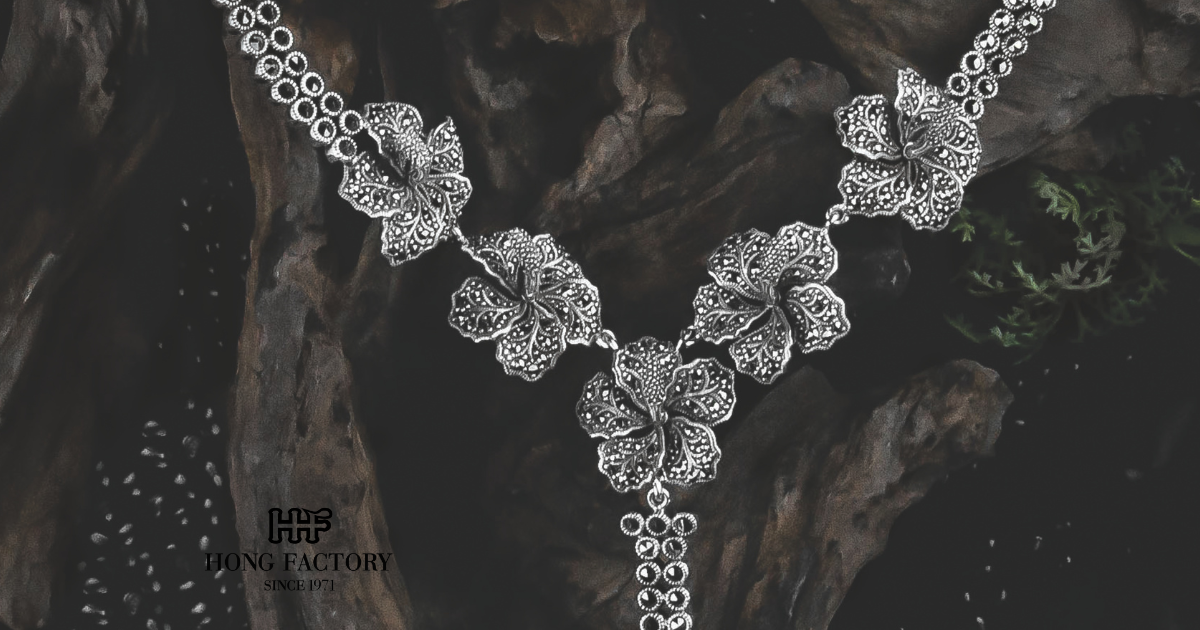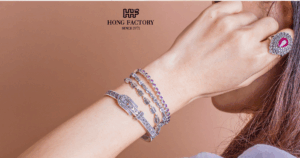In the world of Marcasite Jewelry, silver quality plays a crucial role in determining the beauty, durability, and long-term value of every piece. Whether you are a retailer, distributor, or jewelry brand owner, understanding silver grades is essential—especially when sourcing from Thailand, one of the world’s leading hubs for artisanal marcasite craftsmanship. The silver grade used in a piece affects everything from shine and strength to customer satisfaction and brand reputation.
This comprehensive 1,200-word guide explains the different silver grades used in marcasite jewelry manufacturing, how they impact product quality, and what you should look for when choosing a reliable supplier. 925

1. Why Silver Quality Matters in Marcasite Jewelry
Marcasite jewelry is admired for its detailed craftsmanship and vintage sparkle. However, even the finest marcasite stones can only shine when paired with high-quality silver.
Key reasons silver grade is important:
- Determines the overall durability of the piece
- Ensures proper stone setting stability
- Affects tarnish resistance
- Influences price and customer perception
High-quality silver enhances the brilliance of marcasite stones, creating a cohesive and luxurious finish.
2. What Is Sterling Silver (925 Silver)?
Sterling silver is the most common silver grade used in fine jewelry worldwide.
What it means:
- 92.5% pure silver
- 7.5% alloy metals, usually copper
This blend increases durability while maintaining shine. Pure silver (99.9%) is too soft for jewelry, making sterling silver the perfect balance.
Benefits in marcasite jewelry:
- Strong enough to hold hand-set stones
- Provides a bright, refined shine
- Resistant to bending and deforming
- Ideal for intricate filigree and vintage designs
Thailand is renowned for producing some of the world’s finest 925 sterling silver.
3. Thai Silver (95% – 98% Purity): A High-End Alternative
Thailand is famous for its high-purity silver, commonly referred to as Thai Silver.
Characteristics:
- 95% to 98% pure silver
- Softer and more malleable than sterling silver
Why it’s popular in marcasite jewelry:
- Enhances vintage appeal
- Easier for artisans to engrave and shape
- Provides a deeper, antique-like luster
Thai artisans prefer this grade for highly detailed designs.
4. Fine Silver (99.9% Purity): Limited Use in Marcasite Jewelry
Fine silver is almost pure—but because it is extremely soft, it is rarely used for marcasite jewelry.
Pros:
- Brilliant natural shine
- Hypoallergenic
Cons:
- Too soft to support prong-set stones
- Scratches easily
- Not suitable for complex shapes or filigree
Marcasite jewelry requires precision and strength—making fine silver impractical.
5. Silver Plating vs. Solid Silver: Know the Difference
Some low-quality manufacturers use silver plating instead of real silver. Retailers must understand the risks.
Silver plating:
- Thin layer of silver over a base metal
- Fades or wears off faster
- Cannot securely hold marcasite stones
Solid silver:
- Durable
- Easy to polish and restore
- Adds long-term value
For premium marcasite jewelry, solid sterling silver is the industry standard.
6. How Silver Purity Affects Marcasite Stone Setting
Marcasite stones are tiny and require precise hand-setting.
High-quality silver ensures:
- Tight, secure prongs
- Smooth surfaces with no cracking
- Ability to create detailed patterns
Low-quality silver may cause:
- Loose stones
- Bent or broken prongs
- Uneven surfaces
Silver grade directly influences the lifespan of the jewelry.
7. The Role of Oxidized Silver in Marcasite Jewelry
Oxidation is often used intentionally to create darker tones that enhance marcasite’s antique sparkle.
Why oxidation matters:
- Adds depth and contrast
- Provides vintage aesthetic
- Highlights stone placement
This finishing technique requires good silver quality for a visually pleasing result.
8. How to Verify Silver Quality When Buying Wholesale
A reputable supplier should provide transparency about their silver grades.
Verification methods:
- Inspect hallmark stamps (e.g., 925)
- Request purity certification
- Perform acid or electronic tests
- Evaluate polishing and finishing
If a supplier hesitates to provide documentation, consider it a red flag.
9. Ethical and Sustainable Silver Sources
Today’s consumers care about eco-friendly and ethical sourcing.
Ethical silver features:
- Recycled sterling silver
- Responsible mining practices
- Fair labor production
Thailand’s top manufacturers—like Hong Factory—prioritize sustainable sourcing.
10. Choosing the Right Silver Grade for Your Marcasite Jewelry Brand
Selecting the correct silver grade depends on your market positioning.
Best options:
- 925 Sterling Silver → most versatile and durable
- Thai Silver (95–98%) → ideal for high-end, artisan-crafted collections
Avoid:
- Silver plating
- Uncertified alloys
Premium silver directly increases your brand’s perceived value.
Final Thoughts
Understanding silver grades is essential for anyone involved in marcasite jewelry manufacturing, retail, or wholesale. The purity and quality of the silver determine the durability, shine, and overall value of each piece.
For marcasite jewelry—where precise hand-setting and detailed craftsmanship are key—high-quality sterling silver or Thai silver is the ideal choice.
As one of Thailand’s leading manufacturers, Hong Factory continues to elevate the global marcasite industry through exceptional silver quality, ethical sourcing, and artisanal excellence.
Selecting the right silver grade isn’t just about material—it’s about creating jewelry that endures, inspires, and captures the beauty of timeless craftsmanship.



